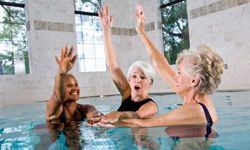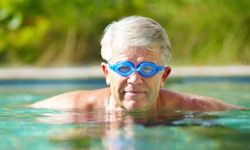It's been said that you can be certain of two things: death and taxes. Another reasonable certainty? Exercise can offset the ravages of time.
The benefits of regular exercise -- including reducing your risk of chronic and debilitating illness such as diabetes and arthritis while increasing your cardiovascular health and lung function -- far outweigh the excuses for not adding it to your life.
Advertisement
Older adults should start slowly. Try adding just five minutes of exercise into your daily routine and gradually increase the time to 30 minutes a day. It's also important to add strengthening exercises twice a week to reduce muscle and bone loss and increase your flexibility and strength.
Exercising in the water puts less stress on joints and allows people with arthritis a reprieve from pain. With many types of water exercise, you don't even need to know how to swim to take part in them. However, we're going to begin with one exercise you will need to know a stroke or two for: swimming.

